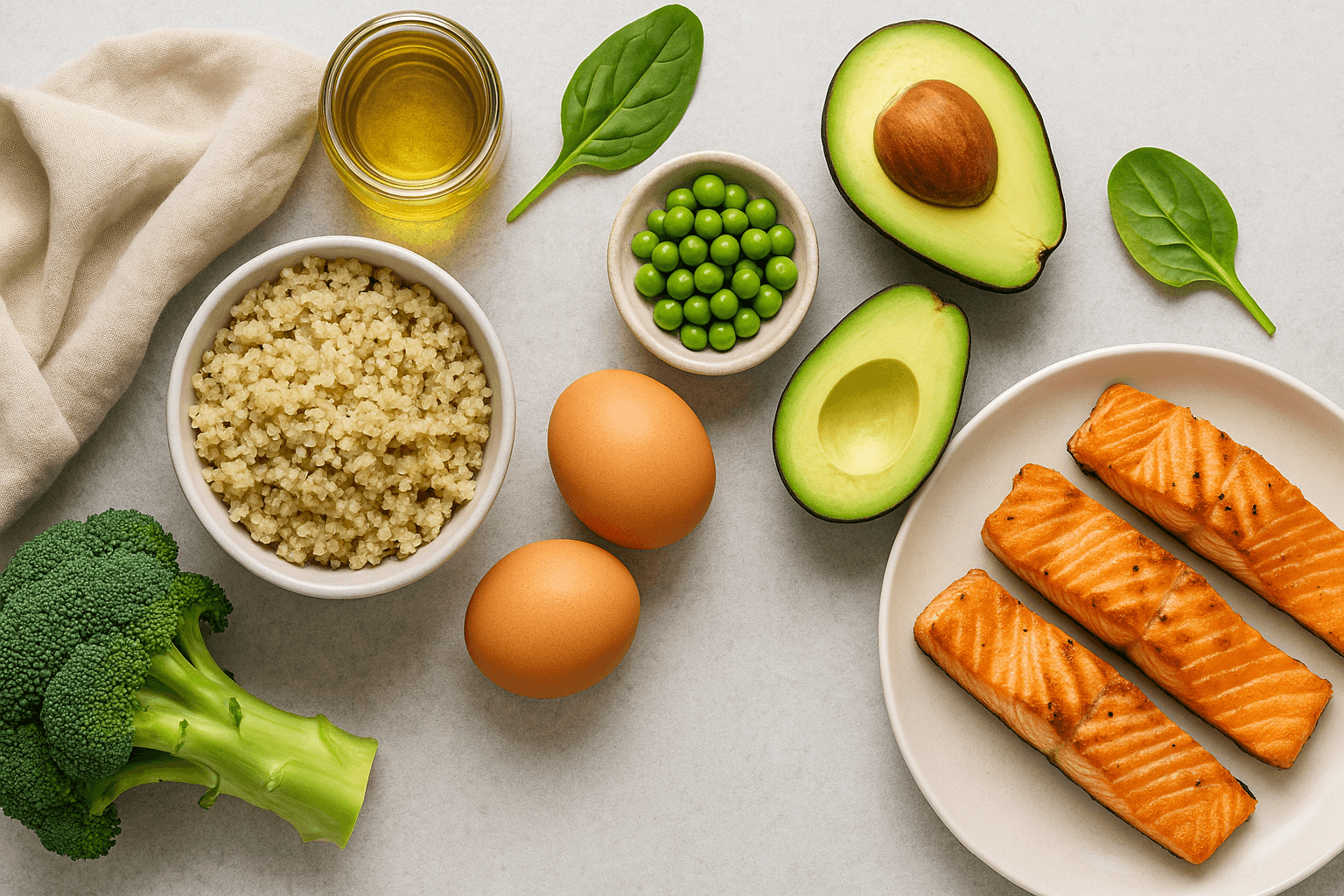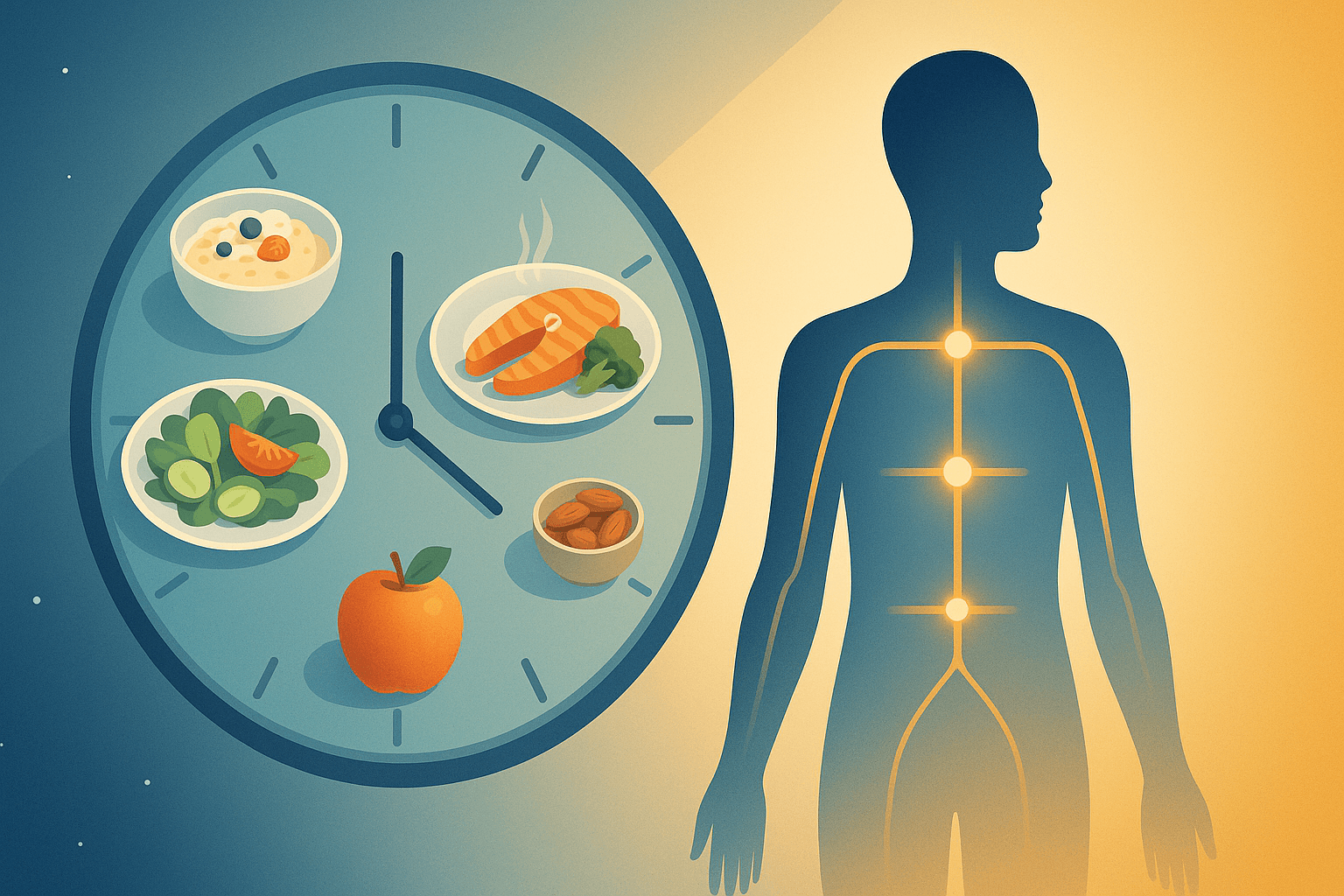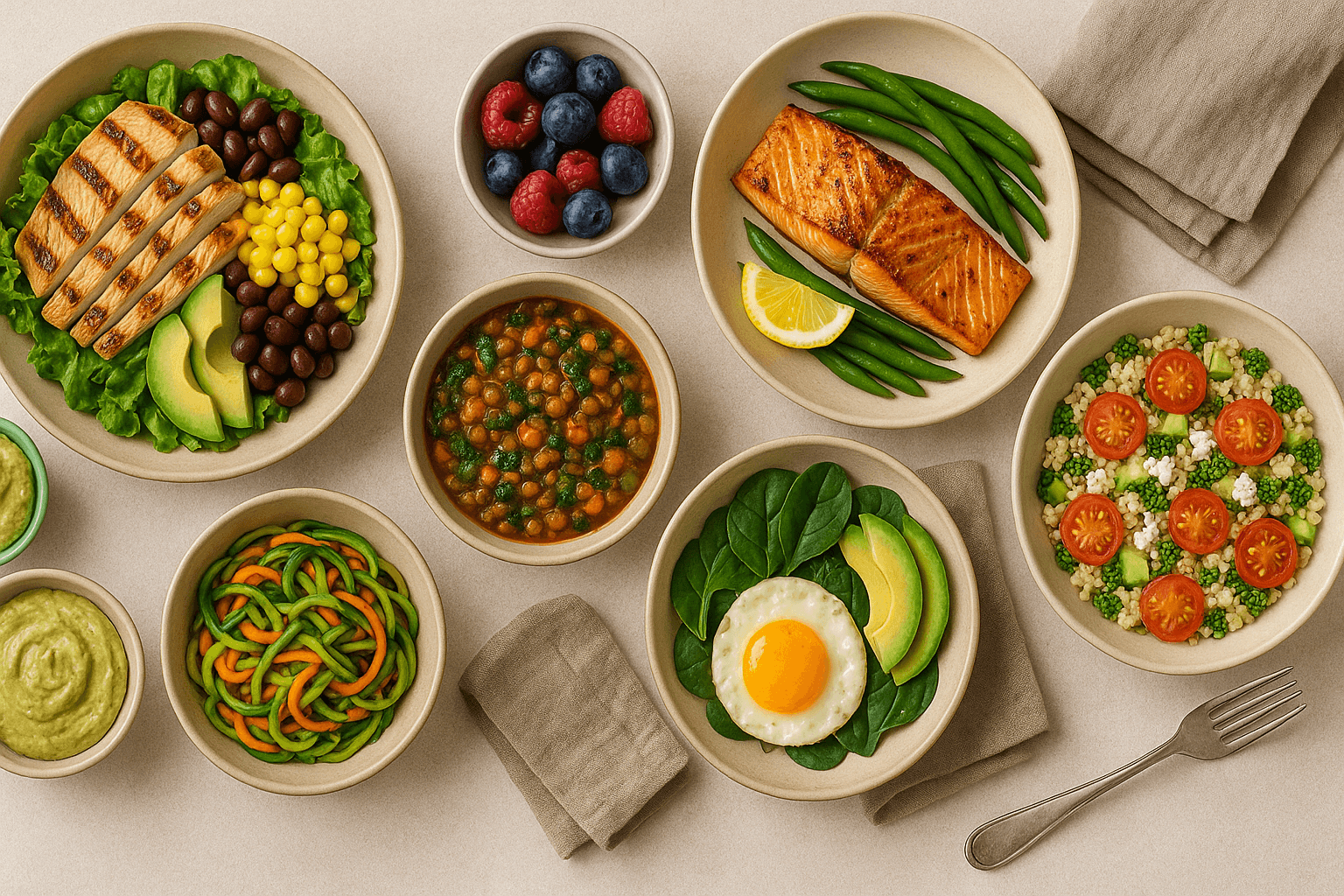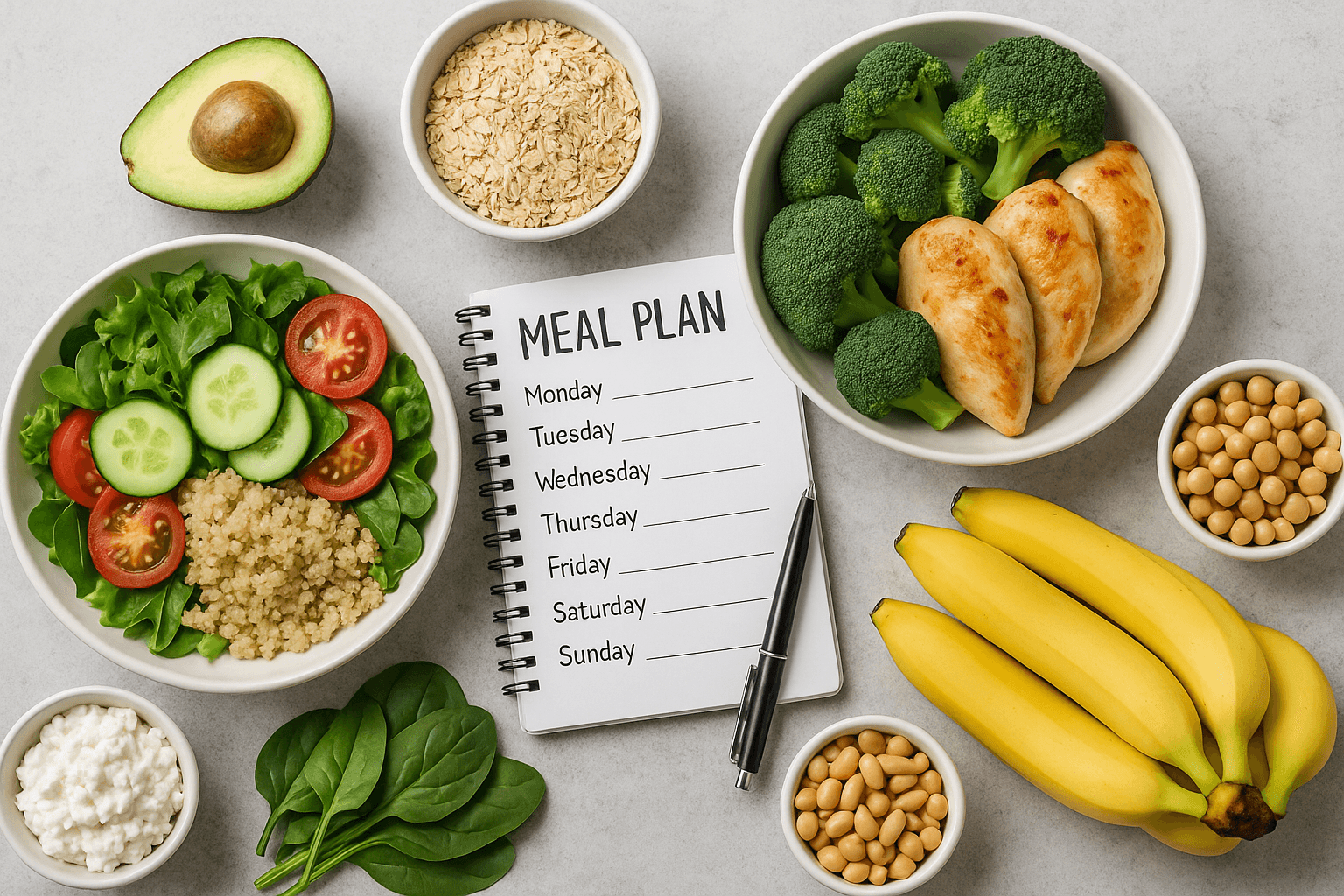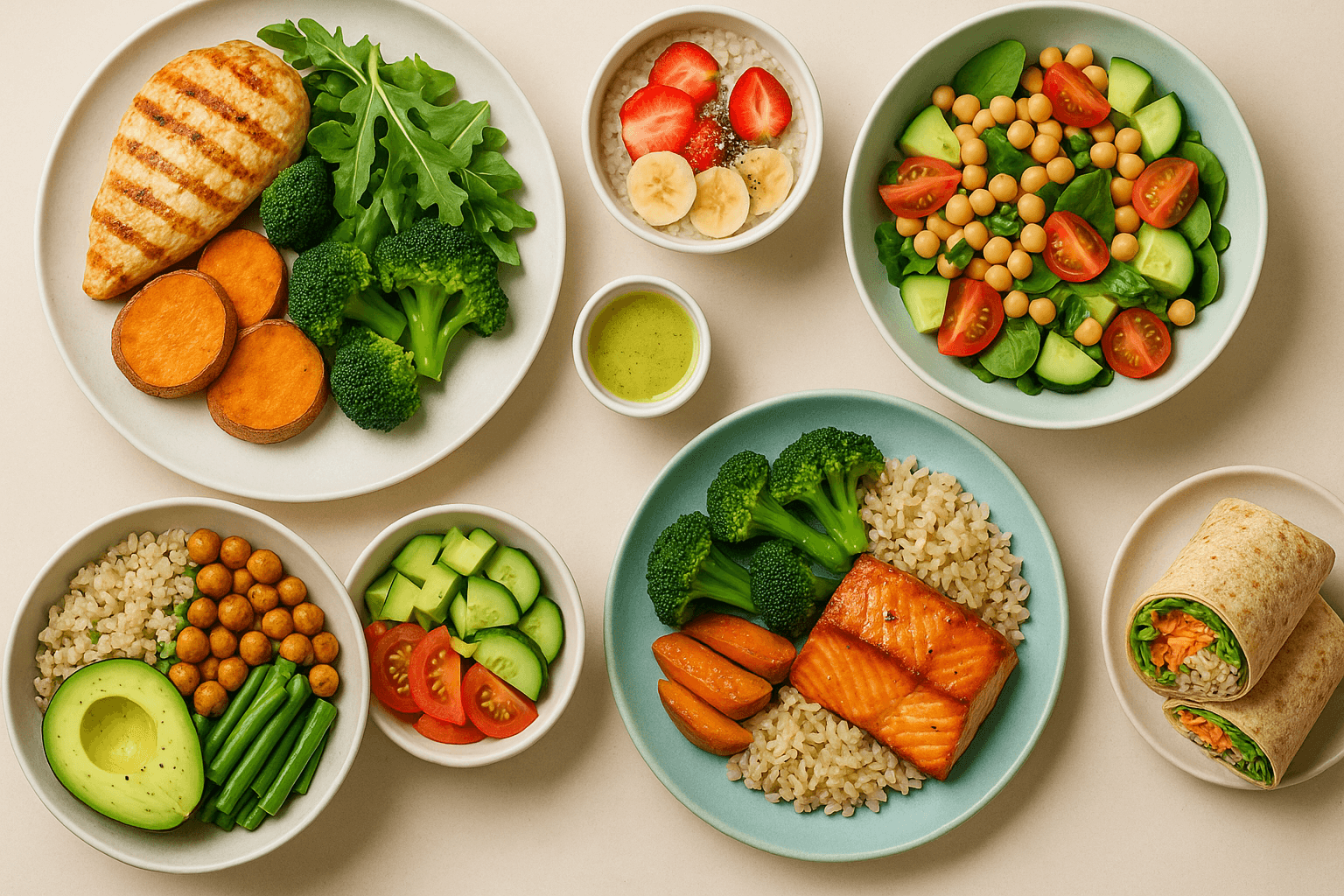Eat Smart, Spend Less: Weekly Meal Plans That Boost Energy and Cut Costs
Published on August 26, 2025
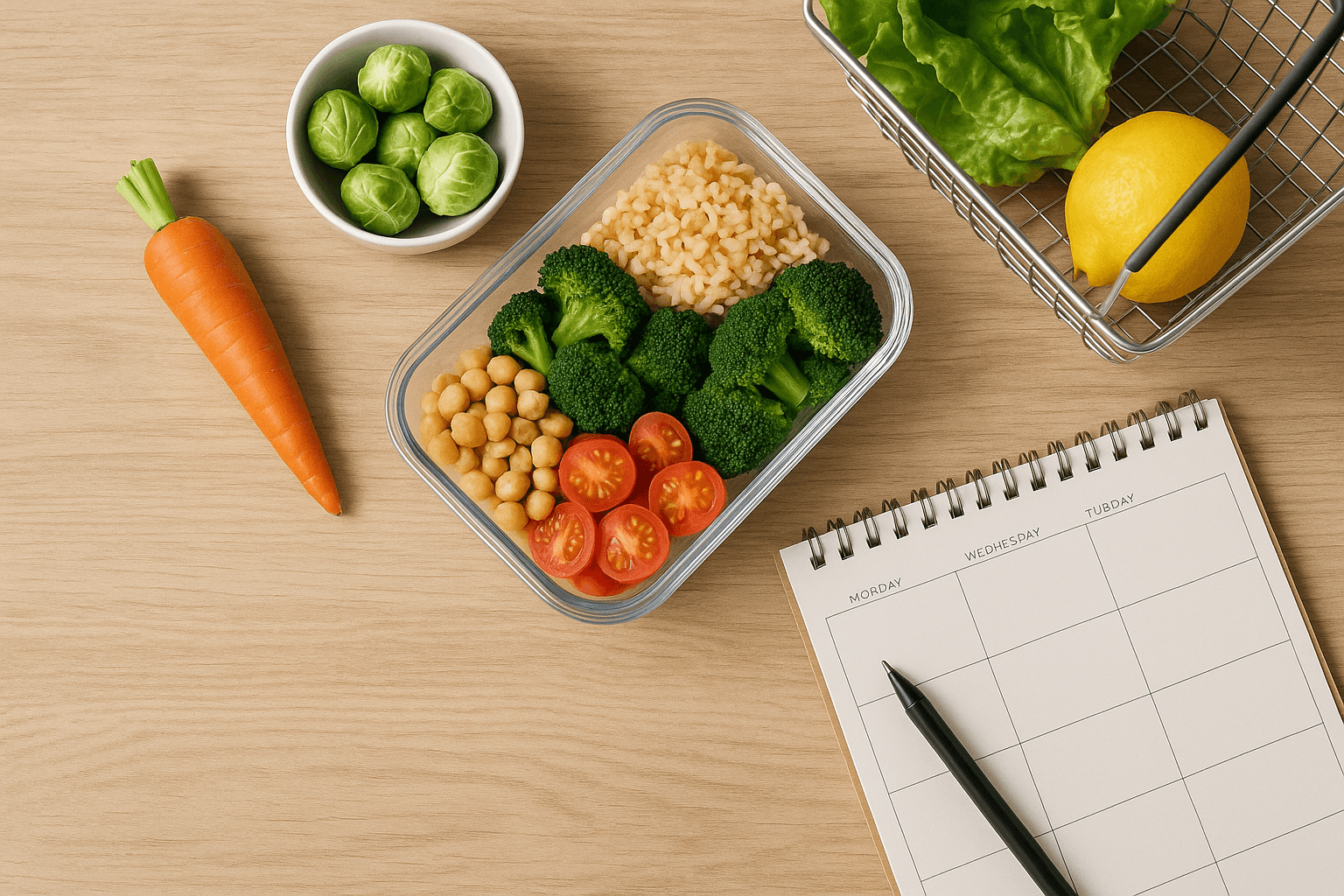
Why Meal Planning Is a Game Changer
Meal planning isn’t just a time-saving trick — it’s a lifestyle upgrade. It helps:
Reduce impulse takeout
Cut food waste
Support balanced energy and mood
Simplify grocery trips
Relieve dinner decision fatigue
Support health goals with structure
Think of it as your GPS for the week: flexible, reliable, and built around your needs.
Step 1: Choose the Right Planning Style
The Classic 7-Day Plan
Map out all meals and snacks in advance.
The Modular Plan
Rotate 2–3 go-to meals for each part of the day.
The Hybrid Plan
Plan weekdays, leave weekends flexible.
The “Two-Prep” Strategy
Cook 2 big meals to reuse through the week.
The Theme Plan
Assign fun meal themes: Meatless Monday, Stir-Fry Friday, etc.
Step 2: Build a Smart Grocery List
Prioritize nutrient-dense, budget-friendly staples:
Proteins
Eggs
Canned beans, lentils
Chicken thighs
Greek yogurt, cottage cheese
Tofu, tempeh
Canned tuna, salmon
Complex Carbs
Oats
Sweet potatoes
Brown rice, quinoa
Whole grain bread or pasta
Barley, bulgur
Healthy Fats
Olive oil
Nut butters
Avocados
Sunflower seeds
Vegetables (fresh or frozen)
Carrots, cabbage, broccoli
Spinach, zucchini, peas
Bell peppers, onions
Fruits
Bananas, apples, oranges
Frozen berries, pears
Flavor Boosters
Garlic, onion, canned tomatoes
Herbs, spices, lemon juice, vinegars
Step 3: Example Weekly Meal Plan
Breakfasts
Overnight oats with flax and berries
Greek yogurt with banana and peanut butter
Egg and bean omelet with leftover veggies
Spinach on toast
Smoothie with oats and frozen fruit
Lunches
Chickpeas with olive oil and toast
Quinoa bowls with black beans and avocado
Soup with yogurt or fruit
Tuna salad and cucumber
Hummus wrap on wholegrain bread
Dinners
Tofu stir-fry with brown rice
Sheet-pan chicken with carrots and potatoes
Lentil soup with whole grain bread
Veggie chili and cornbread
Baked sweet potato with beans and salsa
Pasta with veggie tomato sauce and shredded cheese
Snacks
Apple with peanut butter
Boiled eggs
Cottage cheese with fruit and cinnamon
Carrot sticks and hummus
Banana with almonds
Roasted sunflower seeds
Step 4: Time-Saving Meal Prep Hacks
Cook grains and proteins on Sundays
Pre-chop veggies and store in glass containers
Freeze leftovers for backup meals
Use Friday to clear the fridge
Keep 1–2 emergency freezer meals
Track fridge contents with a whiteboard or app
Break meal prep into 20-minute blocks
Step 5: Budget-Friendly Shopping Tips
Buy in bulk: oats, rice, frozen veggies
Choose frozen fruits and veggies — same nutrients, longer shelf life
Shop seasonal produce
Stick to a weekly grocery budget
Compare unit prices, not sticker prices
Buy store brands
Plan for leftovers and reuse ingredients
Step 6: Customize to Your Life
Families: Batch cook, freeze portions, involve kids
Singles: Buy flexible ingredients, freeze meals
Active people: Add extra protein and healthy fats
Weight loss goals: Prioritize fiber-rich veggies, manage portions
Picky eaters: Use variety in form, not ingredients — deconstruct meals
Special diets: Gluten-free, dairy-free, plant-based — easily adaptable
Let planning work with your lifestyle, not against it.
Final Thoughts: Progress, Not Perfection
Some weeks you’ll meal prep like a champ. Others, you’ll reheat soup. That’s OK. The goal isn’t perfection — it’s progress. With each planned meal, you save money, gain time, and feel better.
Keep showing up. One meal at a time.



